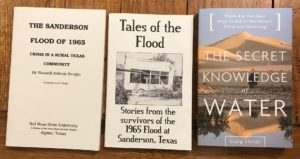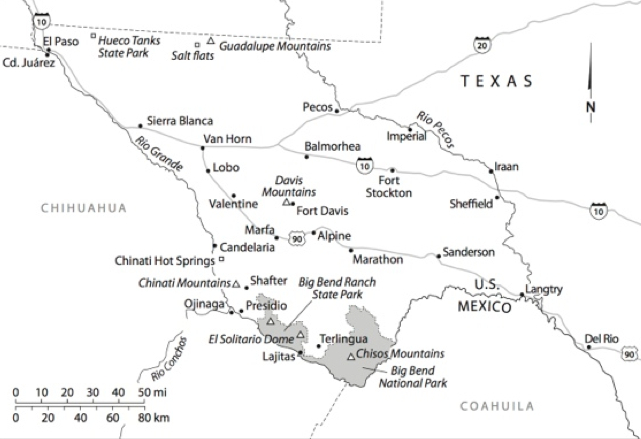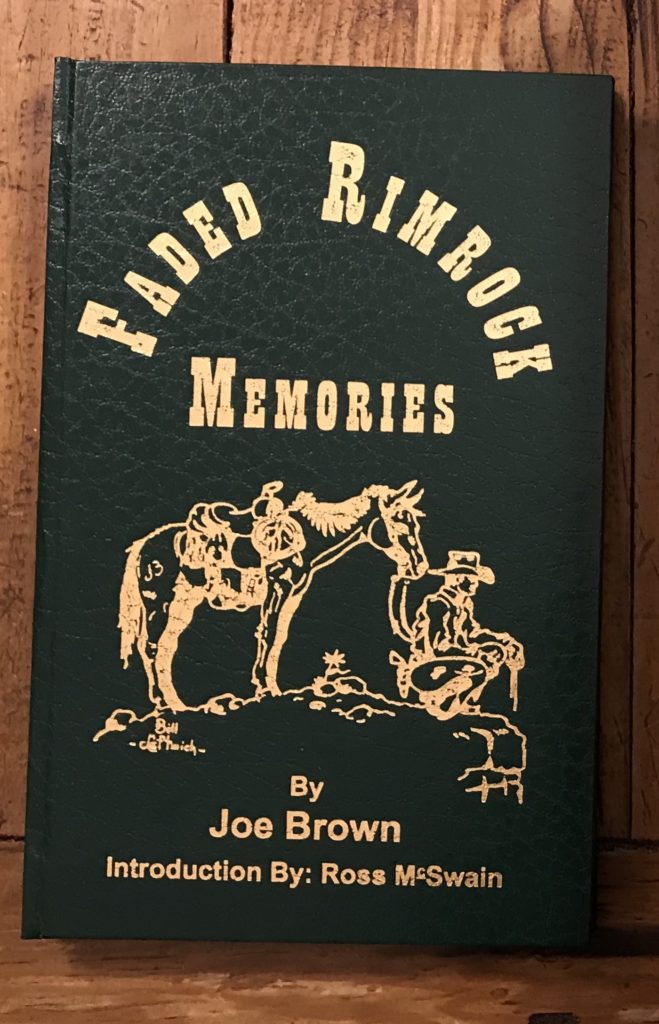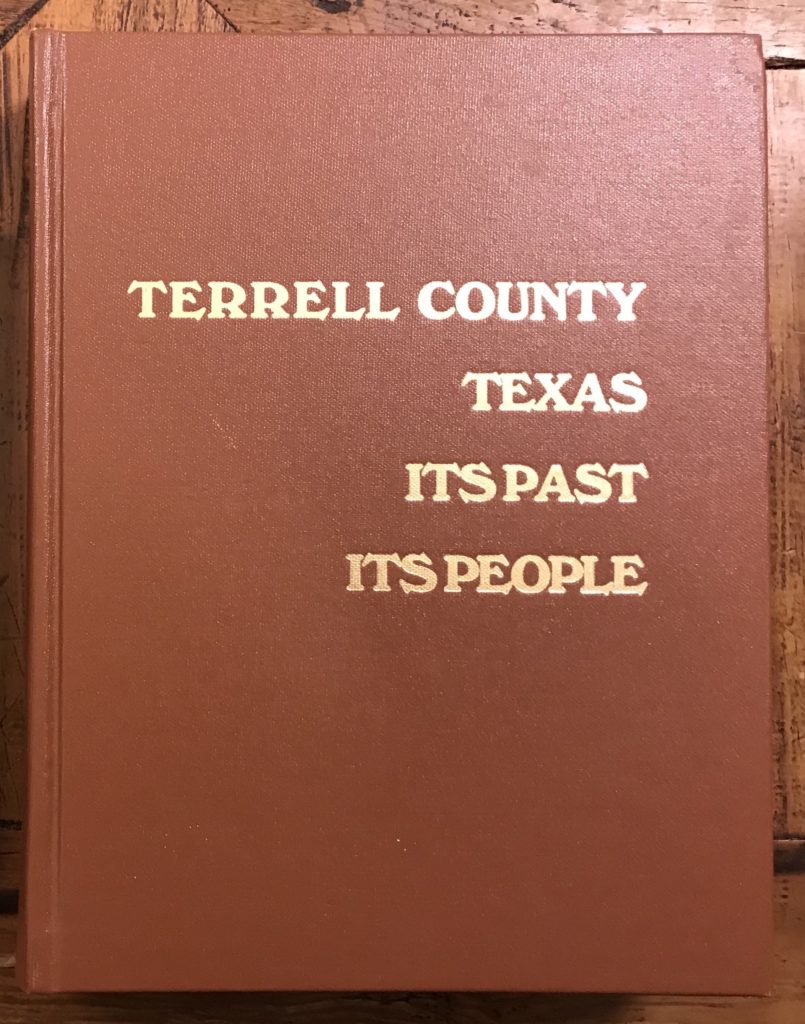
This blog posts on Mondays. This year, 2021, I am dedicating the first Monday of the month to Texas Books, in which I share with you some of the more unusual and interesting books in the Texas Bibliothek, that is, my working library. Listen in any time to the related podcast series.

Writes Craig Childs in his masterful The Secret Knowledge of Water, “There are two easy ways to die in the desert: thirst and drowning.” It does indeed rain in the desert, not often of course, but when it does, with so little vegetation to catch it, water can rage through canyons with killing power. In Far West Texas a standout tragedy of the 20th century was the June 11, 1965 flash flood that killed 26 people and devastated the little railroad town of Sanderson.
But this post isn’t about the Sanderson flood, rather, the matter of books in a writer’s working library. Back when I was writing Miraculous Air: Journey of a Thousand Miles through Baja California, the Other Mexico, my first book of creative nonfiction, I learned the painful way to never, as in, never ever, let pass the chance to snap up a book of local history. These histories, which often offer the richest of detail, unique voices, and personal memories, are vital reading for such a work as mine—as those of you who follow this blog well know, I’m now working on a book about Far West Texas.
Oftentimes local histories are self-published, and in the days before amazon and print-on-demand, only available locally and in limited numbers. Try to find such a book later, and chances are… you won’t. So when I wandered into the Sanderson Visitors Center and saw them, I snapped up Tales of the Flood, a collection of oral histories by C.W. (Bill) Smith, along with Russell Ashton Scogin’s history, The Sanderson Flood of 1965: Crisis in a Rural Texas Community (Sul Ross State University, 1995), and Terrell County, Texas: Its Past Its People (Rangel Printing, Fourth Printing, 2008).
Sanderson is the seat of Terrell County, a county best known for its hunting ranches with fabulous vistas, its cactus, and sheep ranching. One of the more remote towns in Texas, from El Paso Sanderson lies a 4 and a half hours drive east, and from Austin a 5 and a half hours drive west. If you live anywhere in the county outside of Sanderson, you’ll want a rifle. It’s infested with rattlesnakes.
Here’s my map of Far West Texas (that is, Texas west of the Pecos River), showing Sanderson just above the US-Mexico border between Langtry and the Big Bend National Park.

In the Sanderson Visitors Center C.W. (Bill) Smith granted me a fascinating and wide-ranging interview on Sanderson’s history–which of course included much discussion of the 1965 flood. The podcast of this interview has been a long while in production, but I’ll be posting it shortly. (You can listen in to the other 21 podcasts apropos of this book posted to date here.)
From C.W. (Bill) Smith’s Tales of the Flood, from “Genaro’s Story”:
Sometimes a moment of mirth turns to disaster in seconds. Genaro Valles and his wife of Del Rio were just in town visiting. They had found an older wooden house near the Dairy King to stay in while there and spent a restless night from the pounding rain and the roar of the nearby creek. Early that morning Genaro awoke to the sound of water running. He teased his wife for letting the water run in the old toilet. But as he turned over to return to sleep his hand dropped by the side of the bed and fell into cold water…

If memory serves me, I found Joe Brown’s Faded Rimrock Memories in one of the Big Bend National Park ranger station bookstores. A Sanderson, Texas native, Brown grew up “all over West Texas, doing whatever to survive.” His ranch stories and cowboy poetry are lively examples of the genre, and his rattlesnake stories alone are worth the price of the book.
From Faded Rimrock Memories by Joe Brown:
A Texans Version of Jesus Birthplace
Jesus was born in Texas, this I know,
Listen and tell me this is not so.
His mother rode into town on an ass,
His father walked, they had no cash
(end of excerpt)

As for the Terrell County book, a hardcover that clocks in at over 700 pages, that was a bit pricier, and dicier to pack into my luggage. But I’m glad I did, for it is a superb reference on the region, with innumerable family and business histories, and it includes local newspaper clippings from the 1965 flood—and earlier and also devastating floods.
So what is the Texas Bibliothek? That’s what I call my working library for my book-in-progress, tentatively titled World Waiting for a Dream: A Turn in Far West Texas. Texans are rather more prolific on the literary front than bajacalifornianos, so keeping the Texas Bibliothek in order has been, shall we say, a learning experience. But my bookmark organizing method, which I blogged about here, is keeping me away from the Advil.
Next month for my first-of-the-month post on Texas books I’ll be blogging about using archive.org and assembling an online library for out-of-copyright books, that is, books that are now in the public domain. Reading a book online is never the ideal option, but oftentimes necessary.

A Trio of Texas Biographies in the Texas Bibliothek
Lone Star Nation: How Texas Will Transform America by Richard Parker
*
My new book is Meteor

